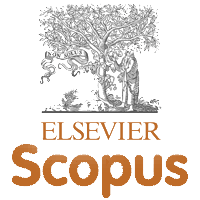RESPIRATORY THERAPIST TECHNIQUES: IMPROVING LUNG HEALTH AND FUNCTION
Abstract
Respiratory medicine comprises diseases that affect the lungs and airways. Common respiratory diseases include asthma, chronic obstructive pulmonary disease, and pneumonia. Currently, respiratory diseases assume a high economic weight in developed countries, leading to high hospital admissions and deaths/year (Moreira et al., 2022). In this context, epidemiological studies have shown that the presence of co-morbidities increases the severity of COVID-19 illness and the risk of critical clinical status. In patients with chronic respiratory diseases, and especially these at a higher degree, COVID-19 represents a greater risk of critical disease status. Globally, countries with older populations and high rates of respiratory diseases have needed a proportionately greater number deaths due to COVID-19. Pulmonary rehabilitation is an evidence-based, multidisciplinary, comprehensive intervention for patients with chronic respiratory diseases who are symptomatic and often have a low health status. It entails a system of exercises, definition of care protocols, health education, and nutritional guidance that aims to improve patient awareness, improve respiratory function, and promote/maintain airway permeability, achieving in this way, the reduction of complications, length of hospital stays, mortality rates, re-admission risks, improvement of vital signs, oxygen saturation, blood gas values, as well as improvement of patients’ daily activities ability and quality of life. Respiratory physiotherapy is a branch of physiotherapy that deals with the prevention and treatment of respiratory diseases through the application of physiotherapeutic techniques. This study presents an overview of techniques used in respiratory physiotherapy, focusing on promotion and maintenance of airway permeability, lung hygiene, increasing/normalizing lung functionality, and improving lung health for pediatric and adult patients (Mane & Memushaj, 2018). Pathologies that most require these techniques are: cystic fibrosis, broncho-pulmonary dysplasia, chronic obstructive pulmonary disease, pneumonia, acute respiratory distress syndrome, asthma, restrictive respiratory diseases, post-surgery treatments, lung transplants, and others. Respiratory physiotherapy is a technique that can be used in hospitals, polyclinics, and in the home environment. Usually, it is performed by certified physiotherapists trained in this field. The goals of respiratory physiotherapy are, among others: promoting/maintaining airway permeability to prevent airway obstruction and accumulation of secretions; promoting drainage of secretions from the lungs and airways; normalizing breathing in terms of frequency, depth, cycle, and rhythm; increasing the functionality of the respiratory system in terms of improvement and normalizing the vital capacity of the lungs; increasing oxygen saturation levels in the blood; preventing/reducing the effects of respiratory physiopathology and improving the general condition of the patient. Respiratory physiotherapy techniques have vital importance in the treatment of pediatric patients with respiratory problems. These techniques are effective in improving the clinical condition of patients, reducing the number of days of treatment in hospitals and improving respiratory parameters.






